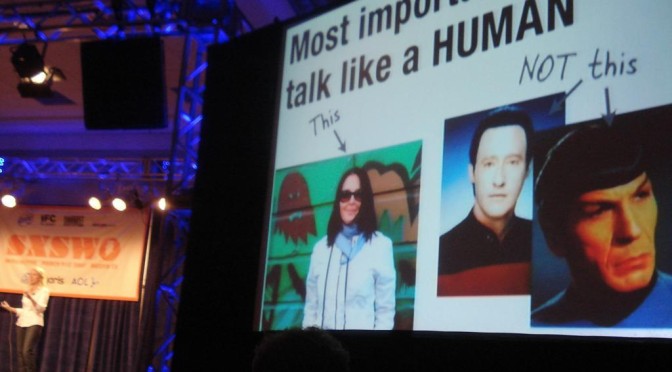Every media company has the same basic strategy. Attract, retain, and monetize viewers. The strategy involves identifying your target market, identifying their needs, determining how to monetize the viewers (ads or subscription), and creating a machine to pump out the content.
The tactics are in constant flux– the basics of storytelling go back a long way, but the way we tell stories keeps changing as new mediums and techniques pop up. You’ll never get all the tactics right, but as long as you keep up with your viewers, you’ll be fine.
It’s not easy keeping all this in balance, but when the strategy and the tactics are right, the company becomes distinctive– the only ones who do what they do.
Distinctiveness comes from meeting 4 criteria
- They know and respect their audience
- They solve a problem
- They have an authentic voice
- They keep cranking out content
We all know the examples of great content from traditional media companies, but in this new world, it’s important to recognize the new players who are distinctive.
This is the start of a series that identifies creators who are making something distinctive. As the exception that proves the rule, we’ll start with Creating Passionate Users by Kathy Sierra.
Kathy Sierra is a writer and blogger specializing in product development. She spent the early part of her career in exercise physiology, but developed an interest in cognitive science, due perhaps to her own issues with epilepsy. She took to her new field with a vengeance, and introduced a new style of writing to the (usually unbelieveably dull) world of technical instruction books. Her Head First series was a revolution in programming books. Subsequently, she started the very influential blog Creating Passionate Users, which became a top resource for Product Managers. Her difference– instead of focusing on features, she evangelized focusing on creating the user experience.
The four criteria:
- Know and respect their audience. Kathy’s audience was product managers, usually at tech companies. Product Management is a well defined yet infinite job. They are constantly trying to evaluate customer requirements and translating them into features, and turning that bundle of features into a remarkable experience. (This description is pretty close: idea -> prototype -> feedback -> design -> build -> launch -> feedback -> iterate -> collect payment.) As a PM, Sierra knew exactly what their issues were because she was the audience. (Solving a problem you actually have always makes a better startup .) Every post is oriented around the need to harmonize what the customer says he wants with what it takes to give the customer an outstanding experience.
- They solve a problem. Every pm is under pressure to be more effective and more efficient. The need to improve the pm process never ends. They are the nexus between the customer, sales, IT, finance, and every other department. Every PM is looking for ways to transform their bundle of features into not just a solution, but a compelling experience. Sierra nailed it when she said “Users want to kick ass.” And she gave lessons in ass-kicking.
- The voice. Sierra was unafraid to use technical language that the target segment would understand, but also wrote in plain English, including profanity when necessary. She also made great use of visuals and charts. Some of her best are here. (I particularly like the “featuritis curve.”
- They keep cranking it out. CPU ran for 4 years, and stopped at the height of its popularity because Sierra started receiving death threats. It’s an ugly story, and has little to do with why she is so good. She has started put a toe back in the water with her new blog Serious Pony. Sadly, it doesn’t have the same pulse as CPU, but it still has gems like this, about stage fright for presenters:
“And since I’m a software developer, I’ll think of the audience as my users.
And if they’re my users, then this presentation is a user experience.
And if it’s a user experience, then what am I?
Ah… now we’re at the place where stage fright starts to dissolve.
Because if the presentation is a user experience, than I am just a UI.
That’s it.
I am a UI.
Nothing more.
And what’s a key attribute of a good UI?
It disappears.
It does not draw attention to itself.
It enables the user experience, but is not itself the experience.
And the moment I remember this is the moment I exhale and my pulse slows. Because I am not important. What is important is the experience they have. My job is to provide a context in which something happens for them. “
Kathy Sierra is a national treasure, and a great resource for anyone looking to turn their nascent product into an actual user experience. Interestingly enough, she had no monetization model (although the blog readership and speaking gigs it led to it sure helped her sell books)– but it solved problems in an authentic voice.
She’s one of the pioneers of the new media, and CPU offers a lot to steal from– authentic language, persuasive charts, relentless focus on creating value. Read the whole thing.
Photo Credit: Flickr
